On French Concept, Inclusive Mobility, Nissan Frontier, and More
French conceptual mobility vehicles, VW addresses mobility for the disabled, a look at the 2022 Nissan Frontier, MINI surveys people about EVs, engineering the Sportster S engine, Honda’s avatar robot, and a driver shortage addressed
#aluminum #robotics
This week On Automotive
- A French Vision of the Future of Mobility
- A Term to Know: “Inclusive Mobility”
- Four Nissan Frontier Facts (and an Observation)
- MINI Sees Bigger EV Acceptance
- Engineering the Sportster Engine
- Honda Hand
///
A French Vision of the Future of Mobility
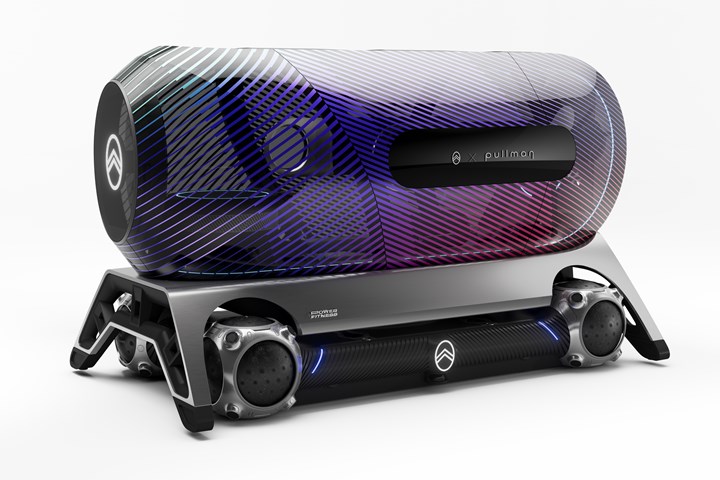
The Pullman Power Fitness transporter: Pump iron on your way to work. (Image: Citroen)
One thing that is true about what is generally known as the “auto industry,” or more contemporaneously as “mobility”: It is creating strange partners.
None more so than—and no surprise here—in France, where the Urban Collëctif has been established by three companies:
- Citroën: The OEM
- Accor: The hospitality provider the operates such hotel brands as Sofitel and Pullman
- JCDecaux: An outdoor advertising company (a billboard in your locale may be owned by the firm even if you don’t live in France) that has an innovative approach to messaging, such as providing street furniture (branded with client ads) and self-service bikes that it has been operating since 2005
Vincent Cobée, Citroën general manager, on the Urban Collëctif:
“At Citroën, we examine medium and long-term trends to anticipate consumer expectations and needs. We believe that this new concept can redefine the framework of urban mobility: shared, electric and autonomous. With the solution we are presenting in partnership with Accor and JCDecaux, we are inventing autonomous mobility for all.”
Keep This In Mind
Note the adjective “urban” in front of mobility in that statement.
That’s key.
A concern that is being expressed by many goes to what’s going on in global cities—or what isn’t going on:
There are traffic jams. Congestion. No flow.
In the case of the Urban Collëctif, a point is made that according to World Bank stats, two thirds of the population will live in cities.
That’s an estimated 6.6 billion people in cities.
So that means even slower speeds going forward.
Getting Real
A fundamental of this French vision is the Citroën Skate. A low-speed, autonomous electric skateboard-type vehicle.
Small: 102 inches long, 63 inches wide, 20 inches high.
Low speed: from 3 to 15.5 mph.
That’s from the OEM.
But then there are Accor and JCDecaux.
They’ve envisioned “Pods” that are fitted on top of the Skate. These top hats are in keeping with brand character:
- Sofitel En Voyage, which is described as “Spectacular and statuesque. . .an architectural parallelepiped of glass and marquetry.”
- Pullman Power Fitness, a glass bubble containing an exercise bike on one side and a rowing machine on the other so one can stay fit while crawling through the city.
- JCDecaux City Provider, an on-demand transport device that is handicap-accessible.
Maybe tranist will be slow. But it won’t be boring.
Observation
The skateboard approach is becoming common.
What is occurring in this Urban Collëctif approach goes to the center of what a brand—especially a vehicle manufacturer—will be going forward.
That is, propulsion systems and chassis are going to be common.
What will be distinctive is what is on top of that skateboard.
The person who wants to have an aperitif and the person who wants to pump iron during their commute are going to be drawn to either the Sofitel or the Pullman approach.
Therein lies the difference of mobility in the future.
///
A Term to Know: “Inclusive Mobility”
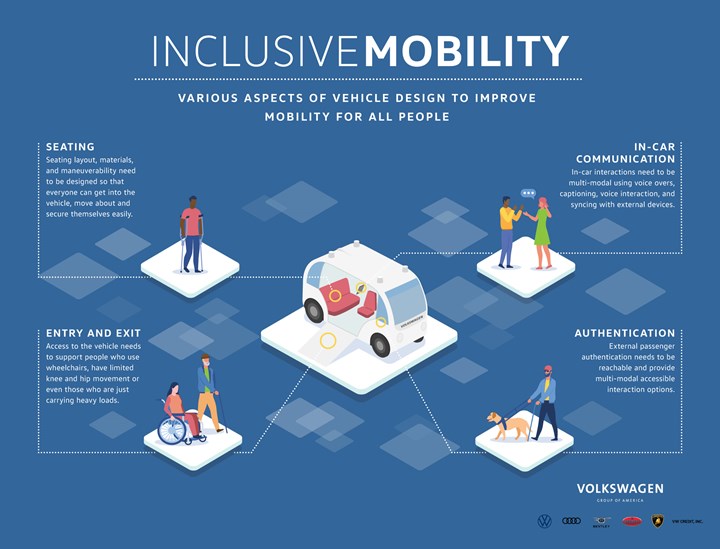
“There are real opportunities to make products better for people. We want to be leading this progress.”—Christian Lorenz, Senior Director Intelligent Cockpit and Body, Volkswagen Group of America. (Image: VoA)
On the subject of autonomous mobility. . .
One thing sometimes gets overlooked.
Reasons why much of the work started in developing autonomous capability for vehicles were (1) to increase safety (there were 38,680 traffic fatalities in 2020) and (2) to provide access to transportation to people for whom driving is difficult or perhaps not an option.
It wasn’t done so people could eat hotdogs and watch Netflix in the back seat.
Christian Lorenz, Senior Director Intelligent Cockpit and Body at Volkswagen Group of America (VoA):
“Our mission is to help improve transportation and the quality of life for everyone, especially people with disabilities. We work on specific features of hardware and software design to ensure that Volkswagen’s future vehicles and services can be used by as many people as possible.”
Lorenz as well as other designers, researchers, engineers and computer scientists are working on “Inclusive Mobility.”
As Chandrika Jayant, UX Research and Design Manager at VoA, explains,
“In our work, we focus on those groups of people who have been traditionally underserved in mobility spaces.”
She adds, “We need to understand the specific needs, we need to be involved in continuous dialogue with the people who are underserved to hear from them their experiences, and not simply imagine what those experiences might be.”
Engaged
So they engage with disability groups and individuals as they develop mobility tech.
For example:
- Creating the means for the vehicle to communicate with users who are blind, deaf or visually impaired, both inside the vehicle (screens, screen readers) and outside (external speakers and microphones to facilitate the location and boarding of vehicles by the visually impaired)
- Considering interior architecture: Deaf passengers might like seats to face each other for communication. . .but there is the issue of potential motion sickness
This Needs to Be Fixed
Jayant points out this needs to go beyond VoA, to other industries and regulators. She notes there are no industry-wide standards on how wheelchairs are latched into vehicles.
That needs to change.
///
Four Nissan Frontier Facts (and an Observation)
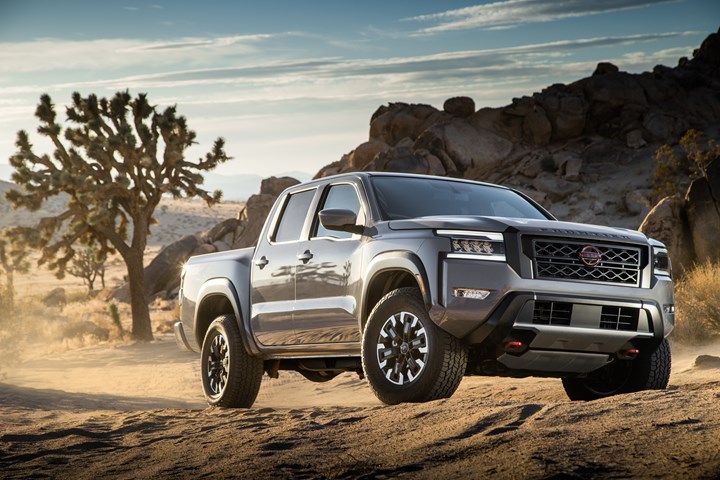
The 2022 Nissan Frontier. Long time coming. Worth waiting for. (Image: Nissan)
- The first-generation Nissan Frontier midsize truck was launched in 1997 (model year ’98) and ran until 2004. Seven years. The second generation was introduced in 2005 and ran until. . .2020. Yes, that long. The third generation was launched this year as a MY ’22 truck.
- In 2020 the Frontier got a new—a 93% change of parts—3.8-liter V6. It produces 310 hp and 281 lb-ft of torque. It is standard in the ’22 Frontier.
- The box is bigger in the ’22 compared to the ’21. That’s because the bed height is increased by 1.4 inches. This increases the size of the bed by 7% for the five-foot bed.
- The ’22 Frontier is being built at the Nissan Canton Vehicle Assembly Plant in Mississippi. There are more than 5,000 employees at the 7-million square foot factory. Also built at Canton are the Altima, Titan and Titan XD. Engines are sourced from the Nissan Decherd Powertrain Plant in Tennessee. (Previously the truck was produced at the Nissan Smyrna Vehicle Assembly Plant in Tennessee.)
Observation: Although the second generation was out there probably too long, the new truck has learned some lessons from the newer products delivered by the competitors. Consequently, the ’22 Frontier is highly competitive with the likes of the Toyota Tacoma, Ford Ranger, Chevy Colorado and GMC Canyon. The exterior design is fresh and bold; the interior execution is functional and thoughtful.
To learn more, watch this interview with Frontier vehicle performance manager, Melaina Vasko.
///
MINI Sees Bigger EV Acceptance
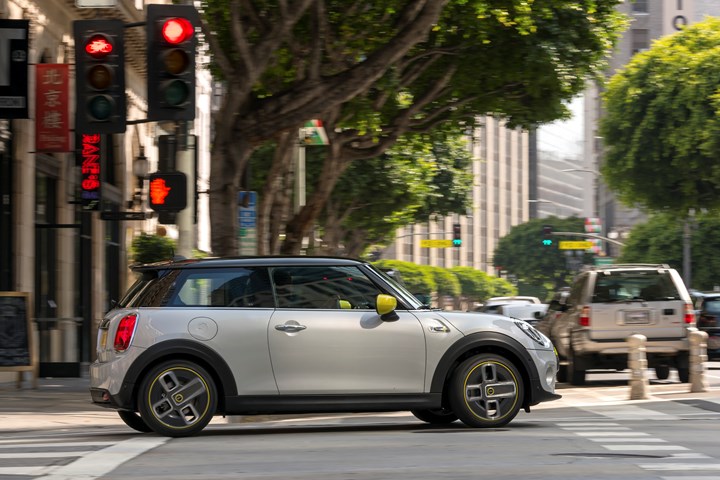
The MINI SE. Yes, electric. (Image: MINI)
MINI, which currently has the MINI Cooper SE on offer, a battery electric vehicle, is keenly interested in the overall acceptance of EVs.
Although it is just one car in the MINI lineup, recognize that the company is under the BMW umbrella, so odds are it isn’t a one-off.
MINI has just released a survey of Americans’ attitudes toward EVs, and the company is feeling positive about the results.
“Our latest survey shows that more consumers are shifting their attention to electric vehicles as they become more attainable and compelling to own relative to gas models,” said Mike Peyton, Chief Motorer* and Vice President, MINI of the Americas.
A Teachable Opportunity
Asked about how far they drive on a daily basis, 78% said <50 miles.
And of that 78%, more than 50% put the number at <20 miles.
Yet only 48% think that the average range of EVs is appropriate for their daily use.
The MINI SE is a vehicle with one of the lower ranges: an EPA estimated 114 miles.
Based on a 50-mile daily range, that could conceivably mean an every-other-day charging regime.
Another One
MINIs have chassis set-ups that are predicated on spirited driving. The instant torque of an electric engine combined with that means the SE can be a whole lot of fun to drive.
Yet when asked whether they think an EV can be more fun to drive than a gas-powered vehicle, only 30% thought that was the case.
*Yes, that is really in Peyton’s title.
///
Engineering the Sportster Engine
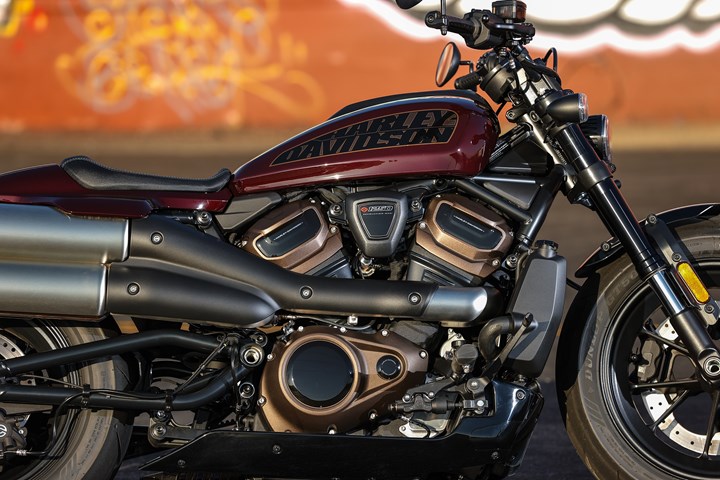
“Every visual element of the Sportster S model is an expression of the motorcycle’s raw power,” says Brad Richards, Harley-Davidson vice president of styling and design. Those magnesium engine covers are colored with a Chocolate Satin finish to draw attention to the engine, which is a structural element of the bike. “This is a wolf in wolf’s clothing.”
The recently introduced Harley-Davidson Sportster S has an interesting engine.
The “Revolution Max 1250T” engine not only propels the bike, but it is a structural element of the chassis.
There are front, mid and tail elements that bolt directly to the engine. This not only means a stiff chassis, but by not having a traditional frame, there is a mass savings. What’s more, the mass is centralized.
Finite element analysis (FEA) was used to develop the 1,250-cc, liquid-cooled 60° V-twin engine that produces 121 hp and 94 lb-ft of peak torque.
Through FEA there was a reduction of material mass in both cast and molded components.
The engine has single piece aluminum cylinders with nickel silicon carbide surface galvanic coating.
The camshaft covers and primary cover are magnesium.
The pistons are forged aluminum.
Feels Like Riding a Motorcycle
The engine uses internal balancers to minimize vibration (for rider comfort and to improve durability) . . .but they are tuned so that there is “just enough vibration to make the motorcycle feel ‘alive.’”
After all, one doesn’t want a Sportster to feel too smooth.
///
Honda Hand
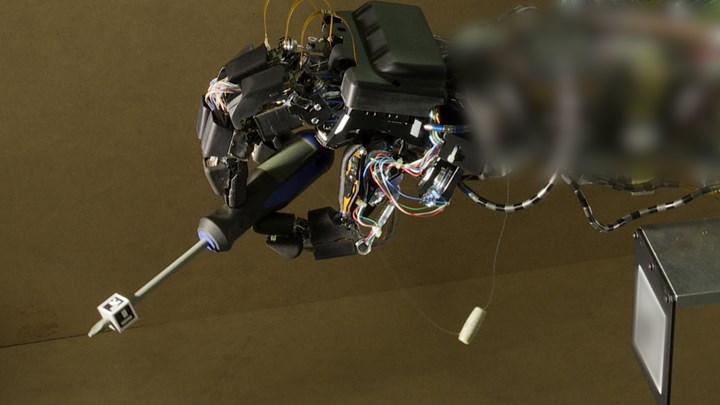
This multi-fingered robotic hand is part of Honda’s development of an “avatar robot,” something that can be operated remotely with the sort of fidelity that is characteristic of a human. (Image:Honda)
Honda is developing what it calls an “avatar robot.”
The goal is to have the ability to allow remote operation of the robot by a human and to have local AI capabilities to provide precise control.
A key to this is the development of a multi-fingered hand.
The hand so far developed has been shown to be capable of handling small, fragile items as well as to handle tools with precise control of force.
Honda plans to have a full avatar robot in real-world use in the 2030s.
Sooner in time: technology demonstration testing of the unit before March 31, 2024.
///
Another Chink in the Supply Chain
Let’s say that the chip shortage disappeared in a poof! and there were a multitude of microprocessors available for one and all.
Zita Zigan, director of Global Vehicle Forecasting at LMC Automotive, has identified another shortage. One that is (1) global and (2) likely to last for years:
A freight driver shortage.
You may have seen the lines at gas stations in the UK. It isn’t that there is a lack of petrol. There is a lack of drivers to deliver it to the gas stations.
Zigan notes that in the UK there is a shortage of qualified drivers. On the order of from 60,000 to 100,000 too few.
That’s about the same number of drivers that are needed in the U.S.
Zigan notes:
“In America. . . the driver shortage is exerting immense pressure on prices: with driver availability contracting and transport demand continuing to rise, labor costs have risen, and this is putting upward pressure on freight rates as carriers pass on the increase in costs to shippers and consumers. Spot rates are reportedly incurring a premium of 50%, while contract rates have seen increases of 10-15%. Although vehicle orders remain high, with supply running behind, lead times and costs are showing no signs of coming down any time soon.”
And so it goes. Or doesn’t.
RELATED CONTENT
-
Cobots: 14 Things You Need to Know
What jobs do cobots do well? How is a cobot programmed? What’s the ROI? We asked these questions and more to four of the leading suppliers of cobots.
-
When Automated Production Turning is the Low-Cost Option
For the right parts, or families of parts, an automated CNC turning cell is simply the least expensive way to produce high-quality parts. Here’s why.
-
On Electric Pickups, Flying Taxis, and Auto Industry Transformation
Ford goes for vertical integration, DENSO and Honeywell take to the skies, how suppliers feel about their customers, how vehicle customers feel about shopping, and insights from a software exec


.jpg;width=70;height=70;mode=crop)






